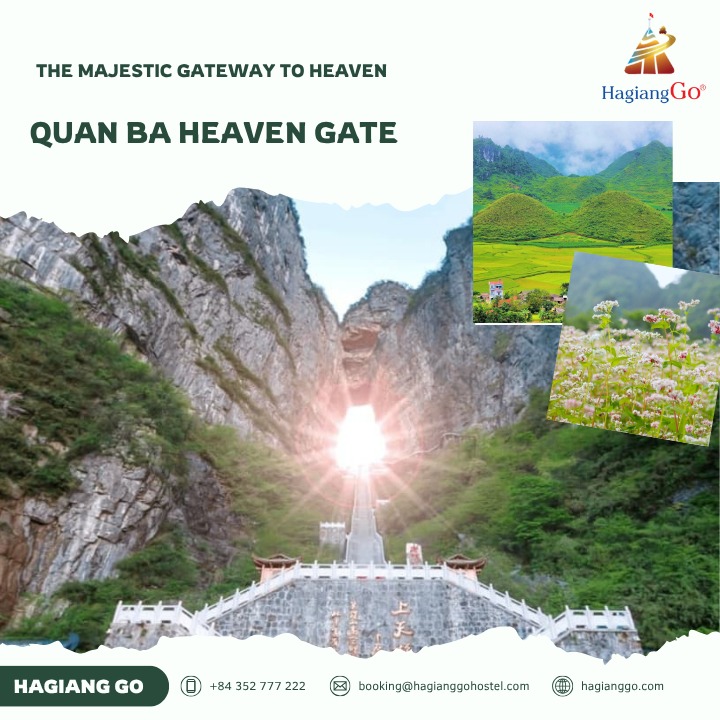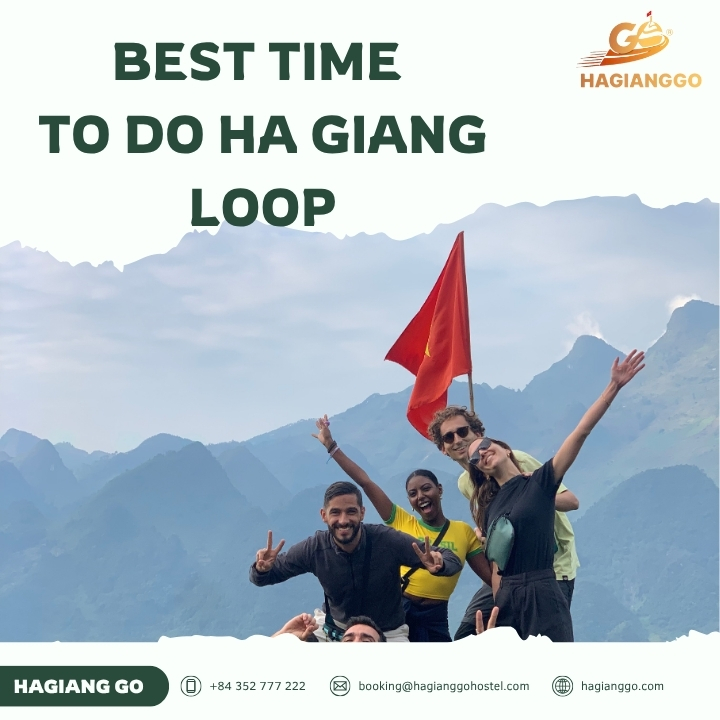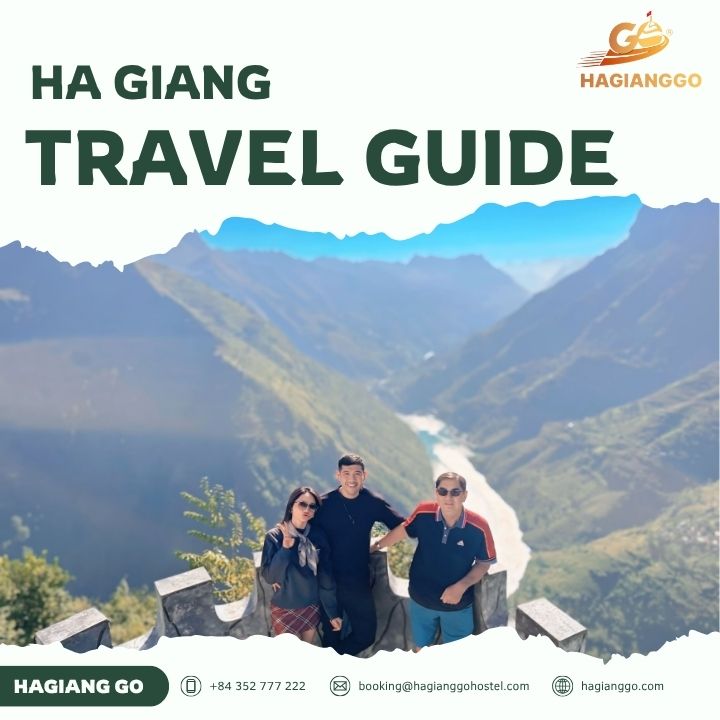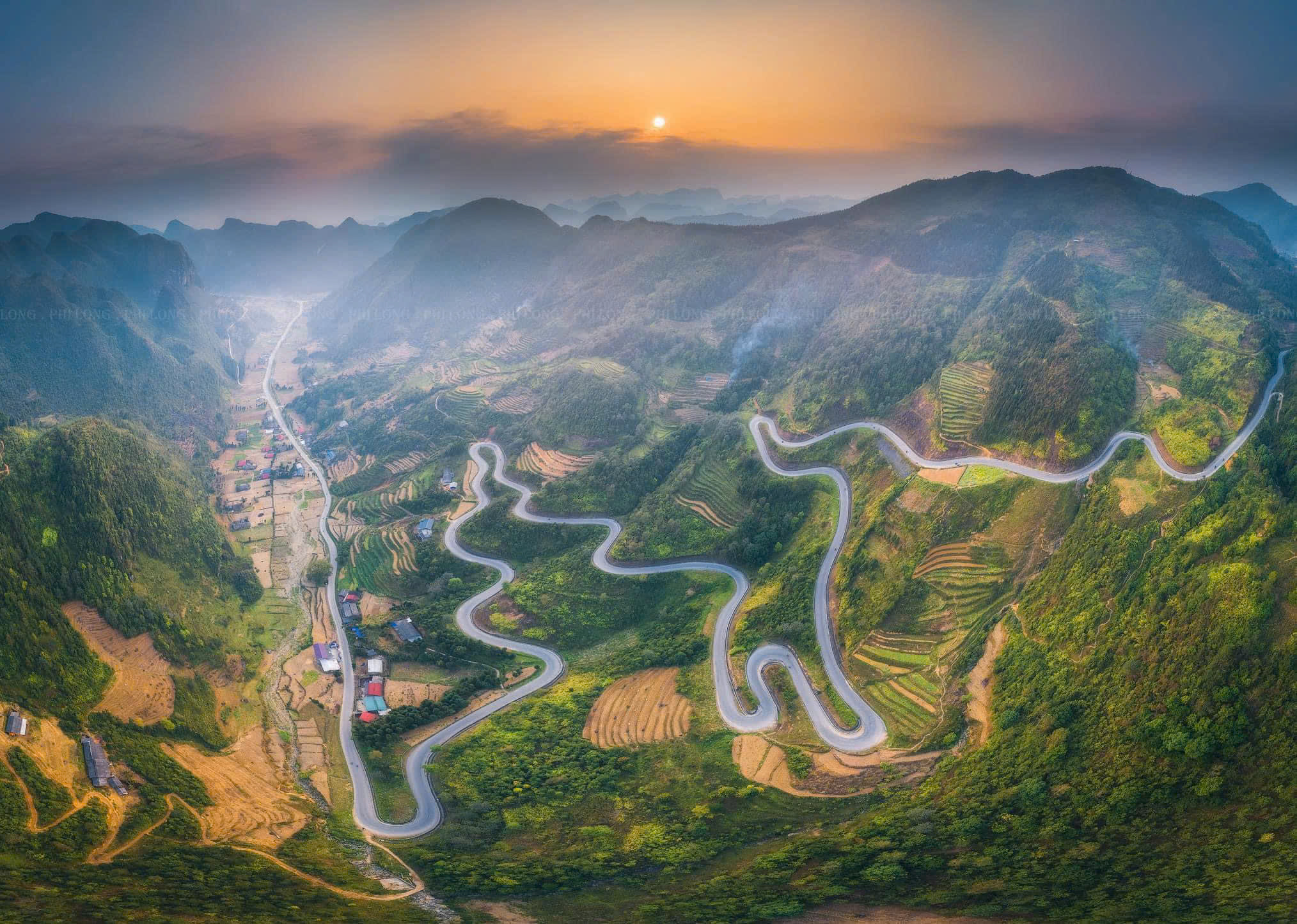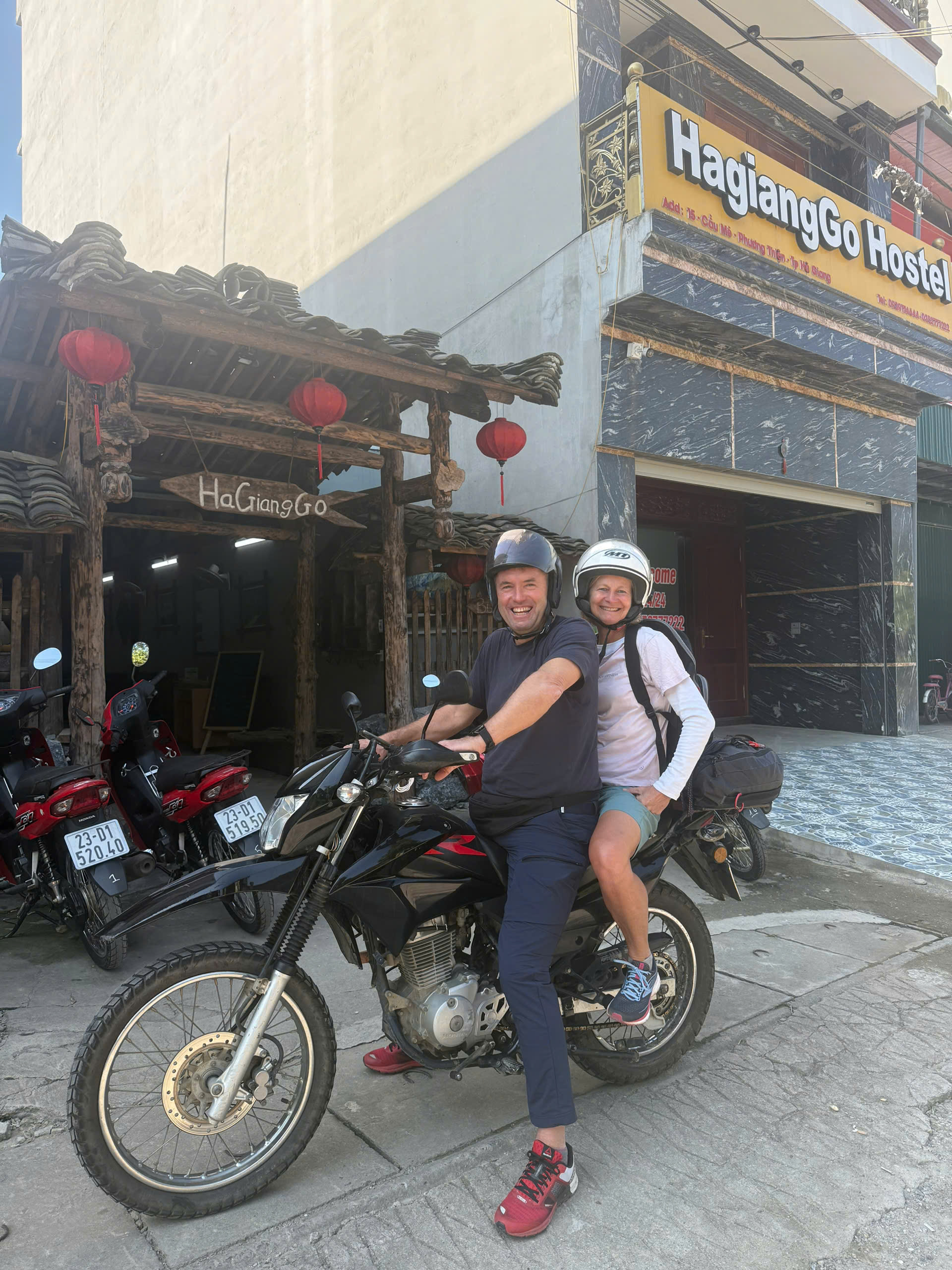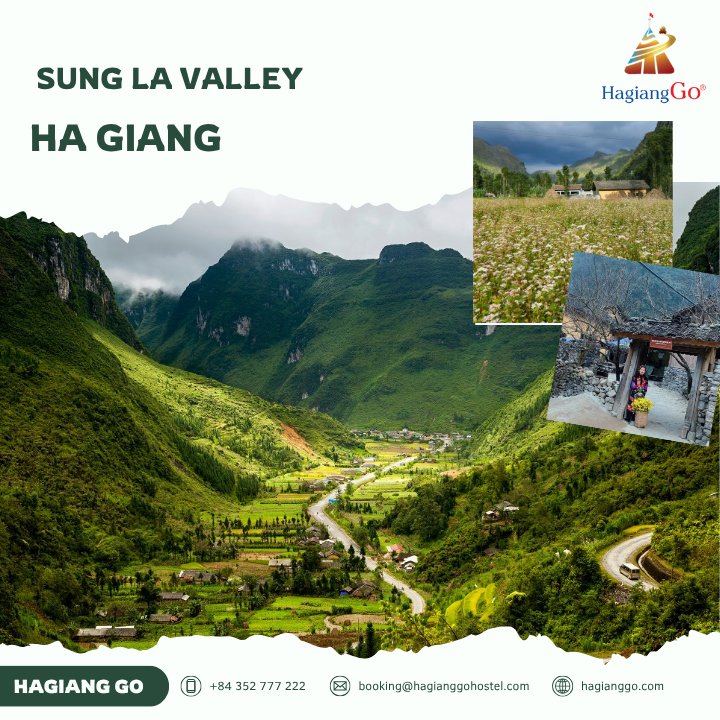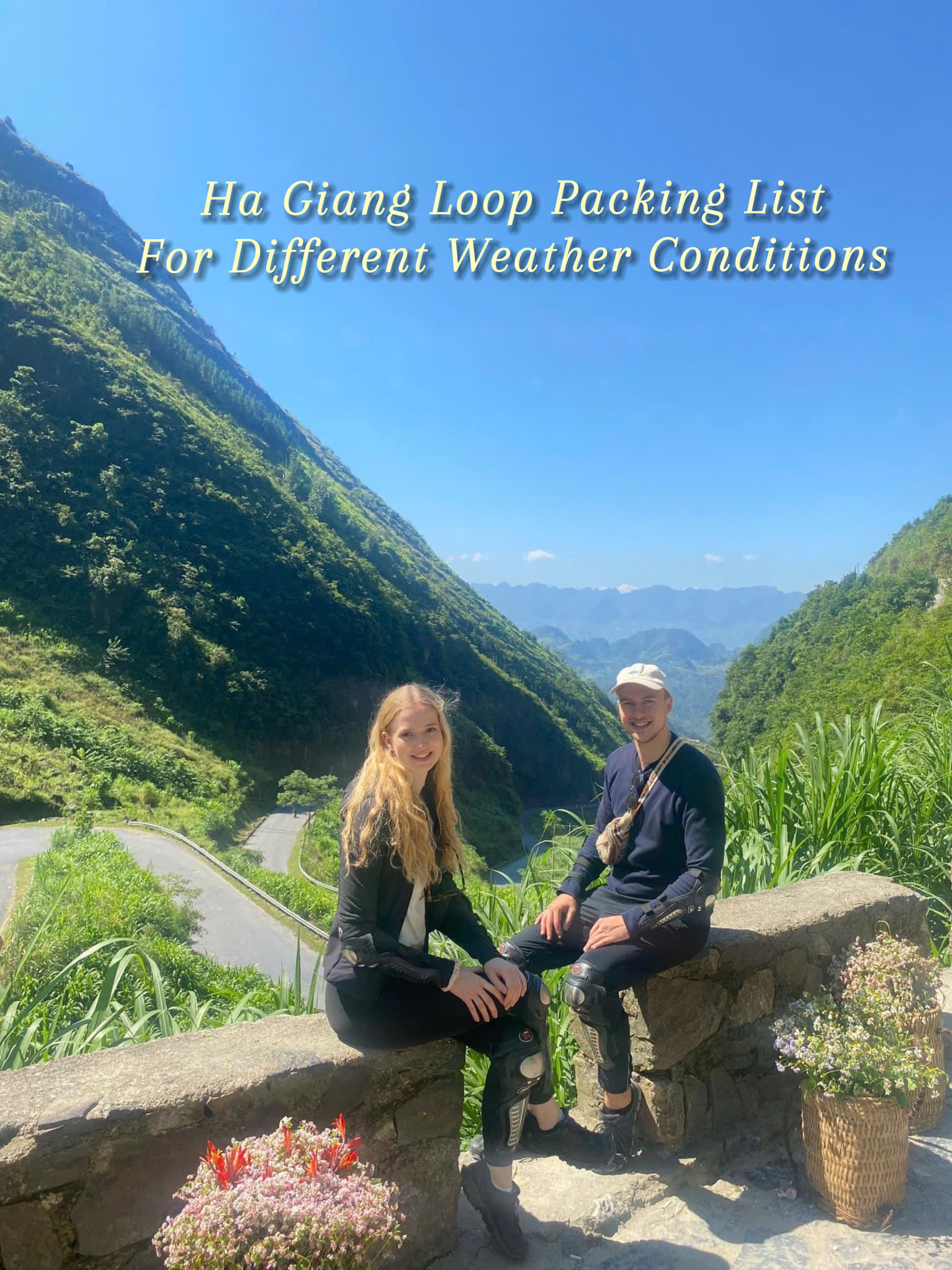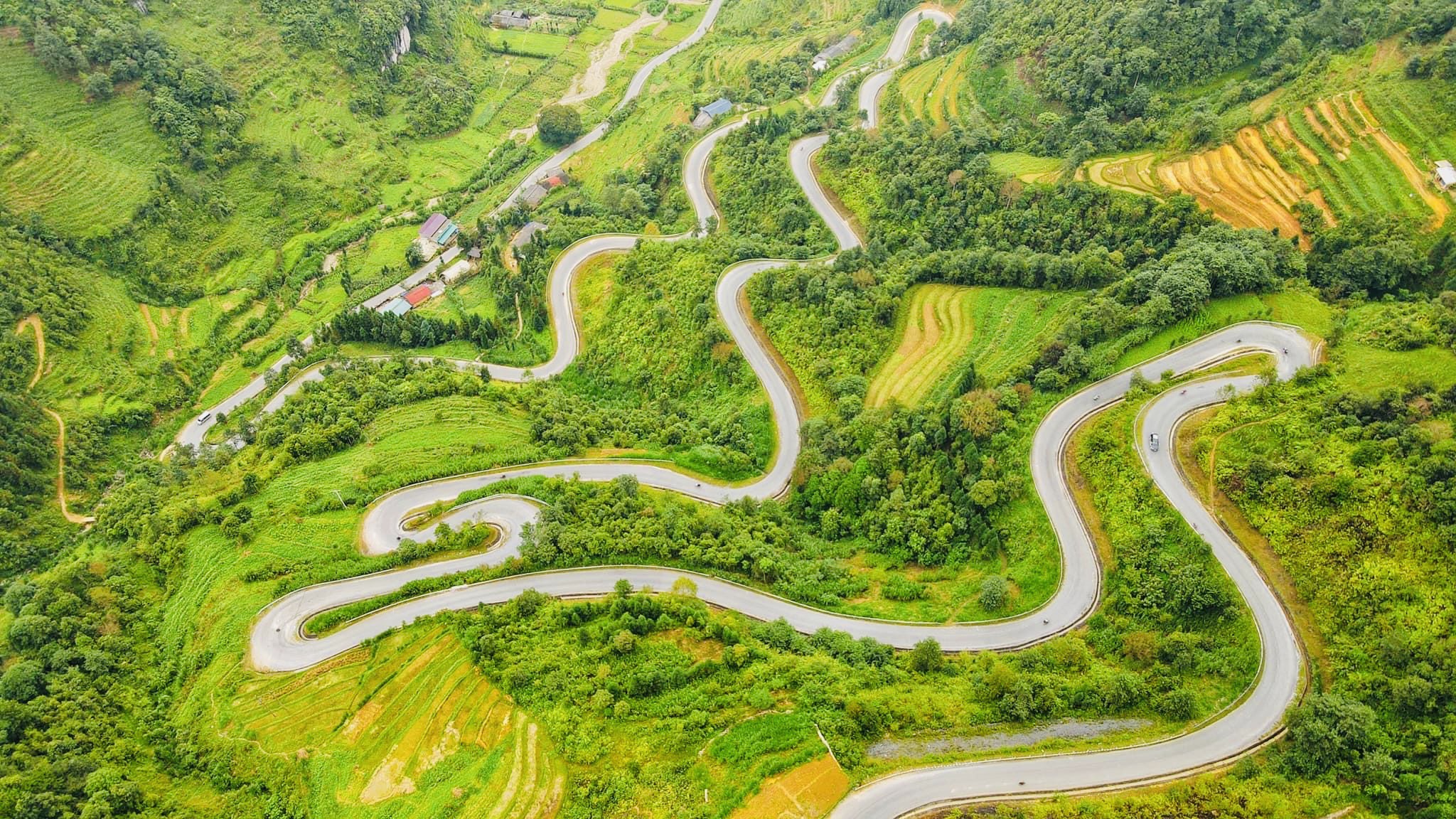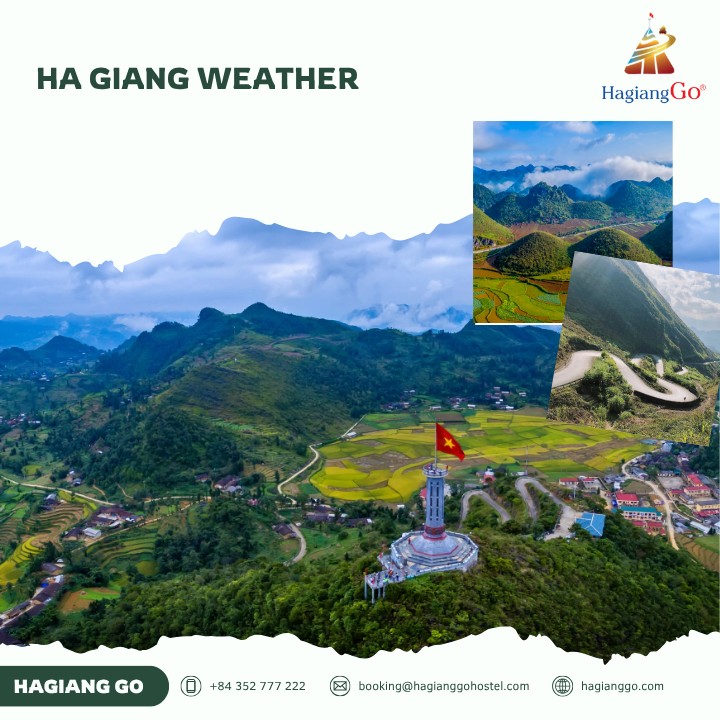1. Where Is Quan Ba Heaven Gate?
Quan Ba Heaven Gate is located along the legendary Happiness Road (National Highway 4C), about 45 kilometers north of Ha Giang City. Perched at an elevation of nearly 1,500 meters, it marks the official entrance into the Dong Van Karst Plateau Geopark, a UNESCO-recognized region of extraordinary geological and cultural value.
As you approach the gate from Ha Giang, the landscape begins to shift. Gentle hills give way to towering limestone cliffs, roads twist tighter, and the air thins and cools. The gate itself, a simple stone arch standing at a mountain pass, may seem modest. But what it opens onto is anything but. Step through, and you’re rewarded with a sweeping panorama of deep valleys, jagged ridgelines, and the dreamlike Tam Son Valley far below.
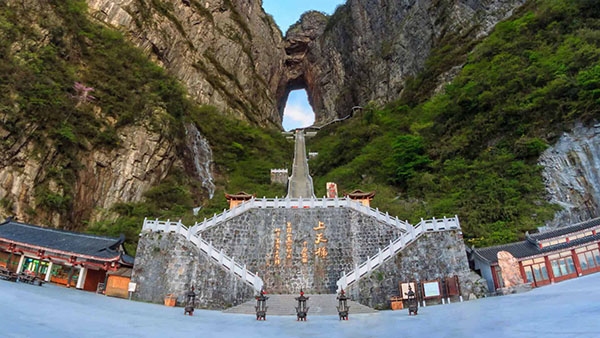
Source: gaohouse.vn
2. What Makes Quan Ba Heaven Gate So Special?
2.1.The View That Takes Your Breath Away
Standing at the Heaven Gate, it's easy to believe you've arrived somewhere sacred. In every direction, mountains rise and fall like ocean waves, their peaks often shrouded in an ethereal sea of clouds. Below, the valley unfurls in shades of green and gold, depending on the season. You might catch the sparkle of water in the rice terraces, the smoke rising from a Hmong kitchen, or the tiny figures of farmers bent to the fields.
On cool mornings, the clouds gather thick and then suddenly break, unveiling the world like a curtain parting before a stage. The air here smells of pine and damp stone. The wind carries silence, and with it, awe.
Photographers, nature lovers, and soul searchers all find something here. It’s not just about the view, it’s the feeling of being above the world, yet deeply rooted in it.
2.2. The Twin Mountains - A Landscape with a Legend
Just beneath Heaven Gate lies the charming Tam Son Town, nestled quietly at the foot of two rounded hills known as the Twin Mountains or Fairy Bosom Hills. These unusual karst formations are perfectly symmetrical, like two mounds rising gently from the valley floor, and have long-inspired stories in local folklore.
As the legend goes, a celestial fairy fell in love with a mortal man in the valley. When she was forced to return to the heavens, she left behind her breasts to feed their child. These hills say the locals, are the remnants of that love, a story that gives the valley its nickname and adds a touch of romance to its rugged scenery.
From Heaven Gate, you get a postcard-perfect view of this mystical pair, framed by rice terraces and layers of cloud-streaked cliffs.
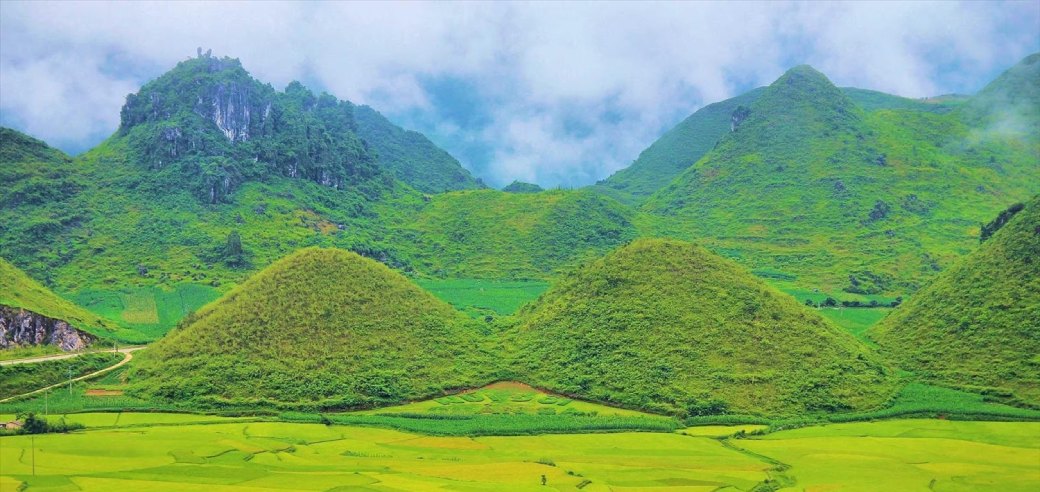
Quan Ba Twin Mountains - Source: baodantoc.vn
2.3. Cloud Hunting and Coffee Sipping
Beyond the visual splendor, Quan Ba Heaven Gate invites you to slow down. Travelers often stop here to sip a hot cup of ginger tea or local coffee at a small café perched near the pass. It’s a cozy place to rest after a long motorbike ride, especially as you watch the fog swirl and reveal hidden valleys below.
Bring a drone or a good camera, if you can, early mornings are prime time for cloud hunting. The rising mist adds a magical softness to every frame.
2.4. Gateway to Adventure
This is more than a viewpoint. Quan Ba Heaven Gate is the symbolic threshold between Vietnam's lowlands and the remote, culturally rich highlands. It's the beginning of an unforgettable journey through the stone forests of Dong Van, past sky-high passes, and ancient Hmong villages, and into the beating heart of Ha Giang.
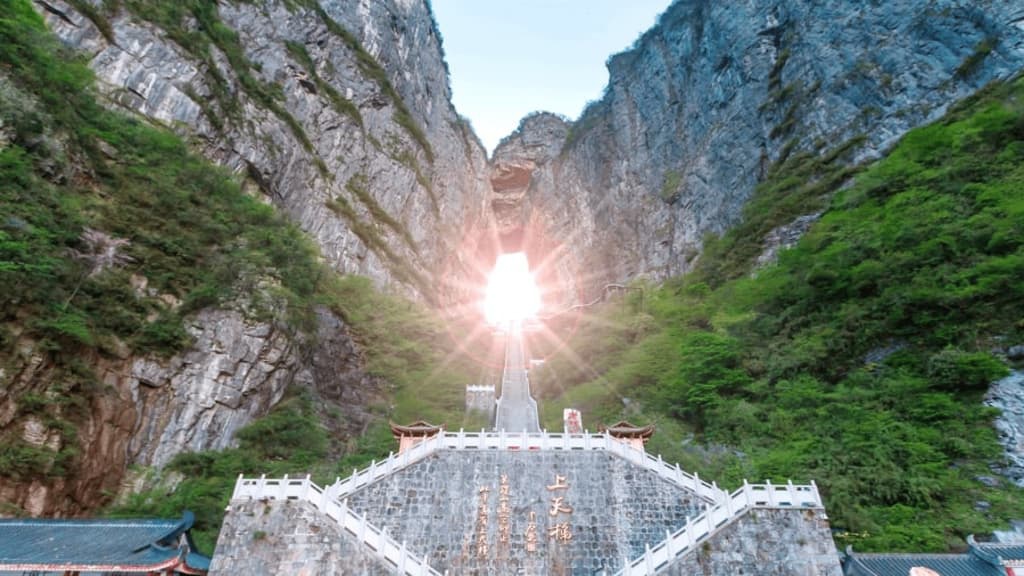
Source: hoabinhevents.com
3. Best Time to Visit Quan Ba Heaven Gate
Quan Ba Heaven Gate offers a unique charm in every season, but certain times highlight specific natural spectacles:
- September (Golden Rice Season): The terraced rice fields transform into a shimmering golden carpet, creating a truly spectacular sight for photographers.
- October to December (Buckwheat Flower Season): The valleys and hills are blanketed in delicate pink and purple buckwheat flowers, a dreamy and romantic landscape.
- April to June (Water Pouring Season): Farmers flood the terraced fields, turning the hillsides into glistening mirrors reflecting the sky.
- January to March (Cherry and Plum Blossoms): The valleys come alive with vibrant blossoms, ushering in a picturesque spring.
- For Cloud Hunting: The best time to witness the "sea of clouds" is often between August and October, especially early in the morning (6:00 AM - 9:00 AM) when the mist gently embraces the mountain slopes.
Important Tip: Always check the weather forecast before your trip. Sunny days, especially around midday when fog tends to dissipate, offer the clearest views. Avoid the rainy season (June to late July) as roads can become slippery and hazardous.
👉 Ha Giang weather guide: What to expect in each season?
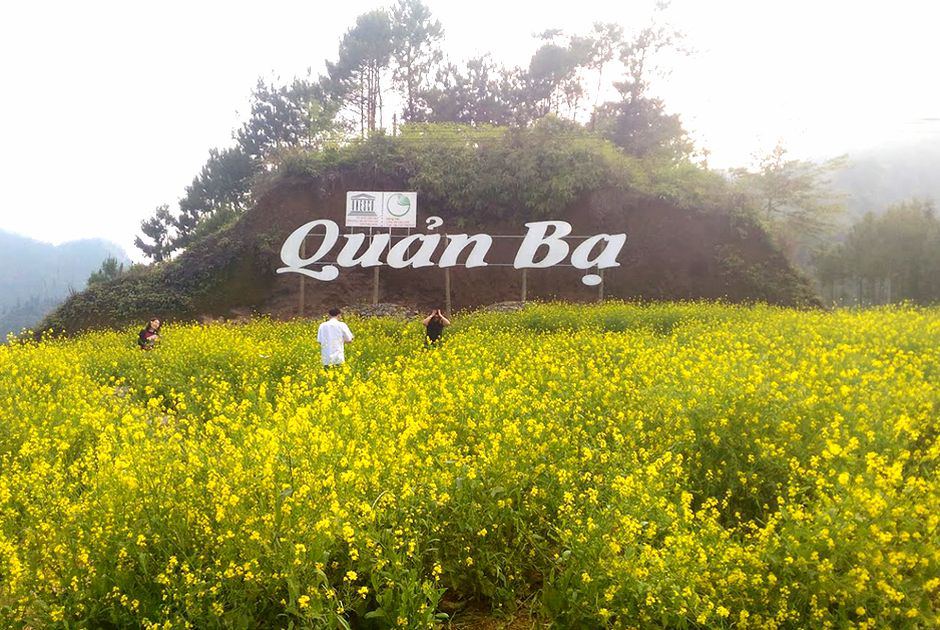
Source: mia.vn
4. How to Get to Quan Ba Heaven Gate
The journey to Heaven Gate is half the experience:
4.1. By Motorbike
Most travelers choose to ride motorbikes along the Ha Giang Loop, which begins in Ha Giang City. From there, it's a 1.5–2 hour ride north to Quan Ba. The road snakes upward, with thrilling turns, steep drops, and mesmerizing views. If you're confident on two wheels, this is one of Vietnam’s most rewarding rides.
4.2. By Car or Private Tour
Not a rider? No problem. Many travelers opt for private drivers or Ha Giang Loop tours with experienced guides, a great choice if you want to soak in the scenery without worrying about road conditions.
4.3. From Hanoi to Ha Giang
Ha Giang City is the gateway to the north. Overnight sleeper buses from Hanoi take about 6–7 hours. From there, start your adventure with HaGiang Go’s custom motorbike or van tours.

Riding a motorbike to Ha Giang is an unforgettable adventure - Source: Ha Giang Road Trip
5. Nearby Attractions Worth Exploring
Once you've stood at the Heaven Gate, you’ll be tempted to keep going. And you should — the treasures of Ha Giang are just beginning.
1 - Tam Son Town & Twin Mountains
Just a few kilometers down from Heaven Gate lies Tam Son, a charming little town surrounded by rice paddies and ethnic villages. This is the best place to admire the Twin Mountains up close, shop in local markets, or stop for lunch. Tam Son is also a good base for exploring the surrounding attractions.
2 - Lung Tam Linen Village
Only about 10 km from Quan Ba Heaven Gate, Lung Tam Village is home to the Hmong community renowned for their traditional flax weaving and indigo dyeing. Walk through the village, meet the artisans, and even try your hand at textile-making. This is an enriching stop for travelers who want to connect deeply with Ha Giang’s living culture.
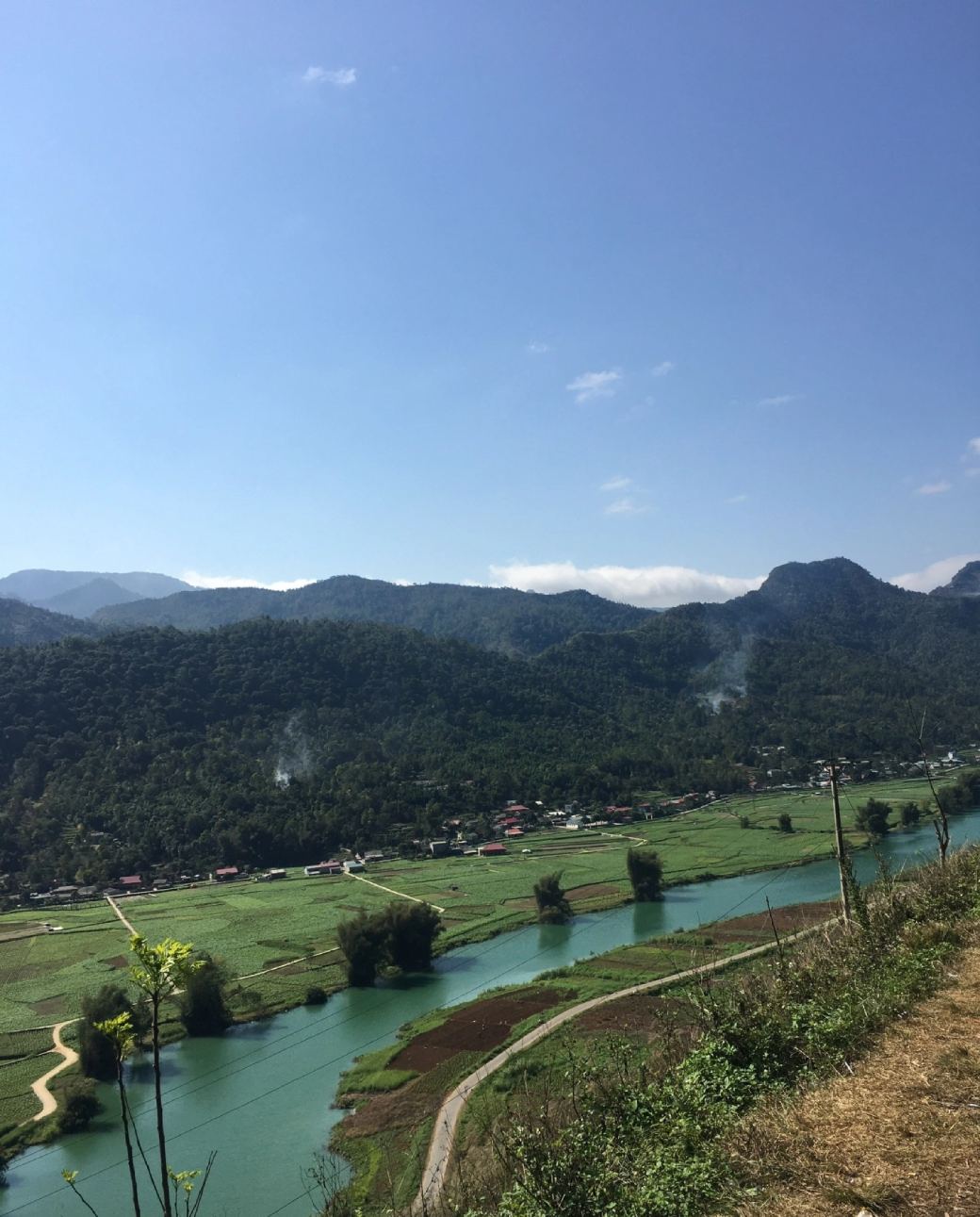
Source: ngoisao.vnexpress.net
3 - Tham Ma Pass
Between Quan Ba and Yen Minh lies the famous Tham Ma Pass, with dramatic hairpin turns and jaw-dropping views. It’s said that in the past, locals used this steep stretch to test the strength of their horses; only the fittest made it to the top. Whether true or not, it’s a great photo stop.
4 - Yen Minh Pine Forest
Before reaching Dong Van, the landscape shifts into a surreal forest of tall pine trees. The Yen Minh Pine Forest is like stepping into another world, cool, quiet, and calming. Bring a jacket and a picnic, and spend some time breathing it all in.
5 - Ma Pi Leng Pass
Arguably the most majestic section of the Ha Giang Loop, Ma Pi Leng Pass offers breathtaking views. Imagine riding along a narrow cliff road with limestone mountains plunging thousands of meters into the emerald Nho Que River. It’s wild, raw, and humbling.
You can take a boat ride on the Nho Que River below, which is a serene contrast to the epic heights above.
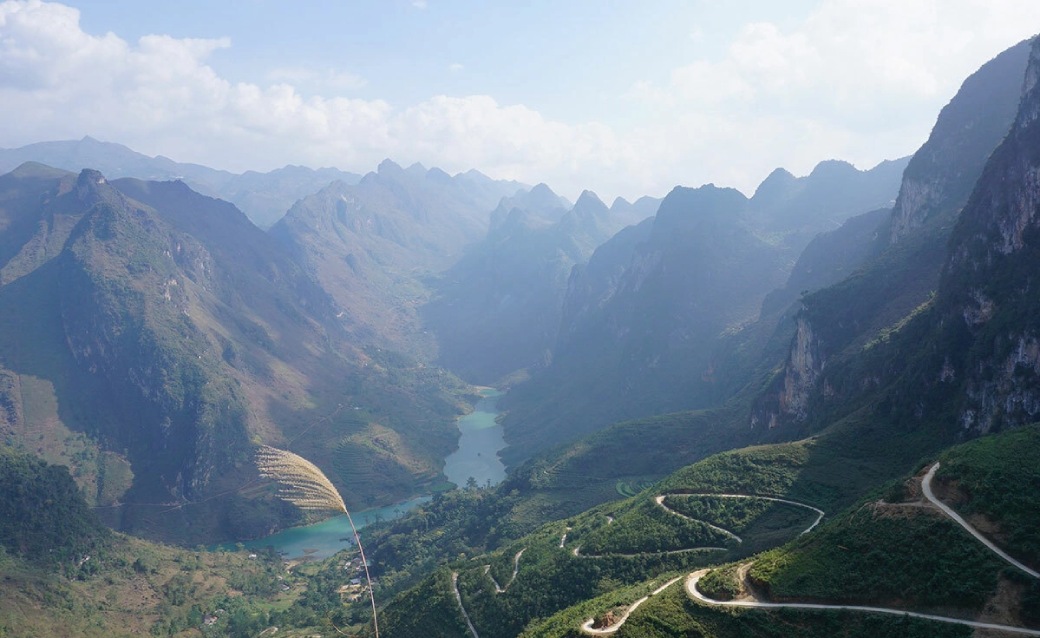
Source: Vnexpress
6 - Lung Cu Flag Tower
Continue north and you’ll reach the iconic Lung Cu Flag Tower, proudly standing near the border with China. From the top, you’ll see the rolling karst landscape stretch endlessly into the horizon, a powerful moment for many Vietnamese travelers and a unique perspective for international visitors.
7 - Dong Van Old Quarter
Tucked in Dong Van Town within Vietnam’s UNESCO-recognized Dong Van Karst Plateau Geopark, the Dong Van Old Quarter is a captivating blend of history and culture, perfect for Ha Giang Loop explorers. Its ~40 ancient two-story homes, with clay walls, wooden frames, and yin-yang tiled roofs, showcase a Vietnamese-Chinese architectural fusion, glowing under red lanterns. The vibrant Sunday Market (5 AM-10 AM) bursts with life as Hmong, Tay, and Dao locals trade crafts, livestock, and delicacies like Thang Co and corn wine, while the March lunar "Old Town Night" highlights ethnic brocade and traditions
8 - Thach Son Than Buckwheat Flower Fields
From late September to November, Thach Son is blanketed in soft pink and purple buckwheat flowers - a dreamy sight against the rugged limestone backdrop. This is one of the best places to witness Ha Giang’s signature bloom and enjoy the Buckwheat Flower Festival atmosphere.
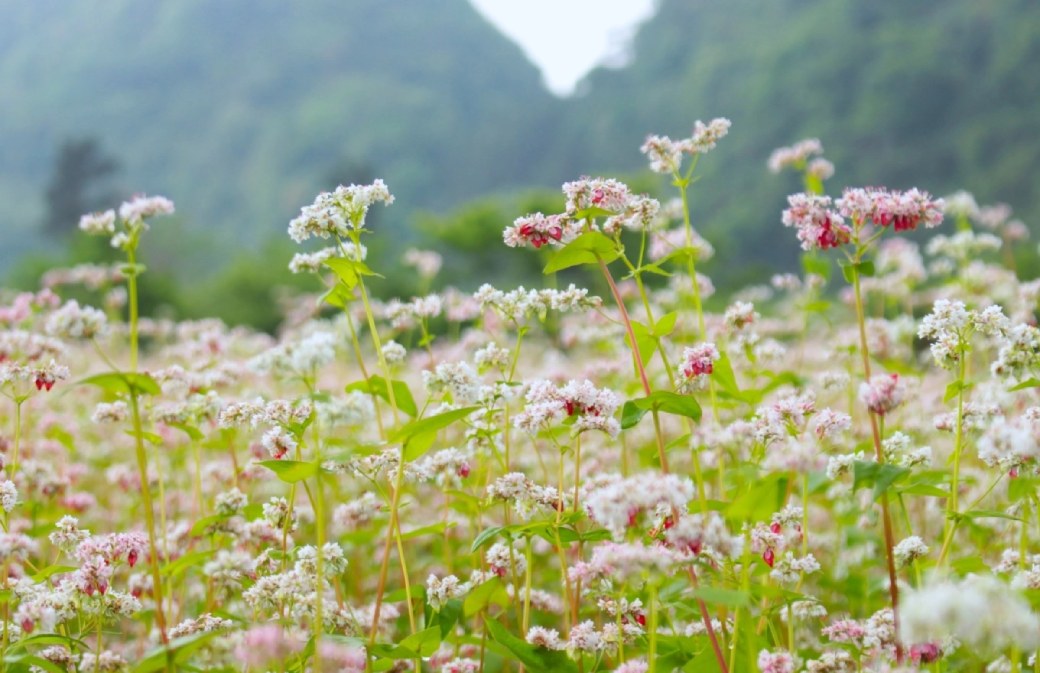
Source: Vnexpress
9 - Lung Khuy Cave
Lung Khuy Cave, located in Lung Khuy Village, Quan Ba Commune - Just 7 km from Tam Son, is a stunning natural wonder within the Dong Van Karst Plateau Geopark. Known as the "First Cave of the Plateau," it was discovered in early 2015 and opened to tourists on November 12, 2015. The cave, stretching about 300 meters with multiple branches, features magnificent stalactites and stalagmites formed over millions of years, creating a magical and pristine landscape. Its geological significance, dating back over 400 million years, stems from limestone mountain development over an ancient sea.
10 - Quan Ba local market
Quan Ba market takes place only once a week, on Sunday and is located in Tam Son Town, is the largest market of Quan Ba District Hill Tribe Markets in Quan Ba, Ha Giang. The busiest time at the market is generally between 6 and 9 a.m., when everyone rushes to buy the freshest vegetables, fruits, and meat for their families Quan Ba market:
The ethnic trade local specialties such as: corn wine, soy bean, brocatelle products. This market serves the local ethnic minority communities in the mountainous Ha Giang region.
Plan Your Journey to Quan Ba Gate with HaGiang Go
At HaGiang Go, we don’t just bring you places, we guide you through experiences. Quan Ba Heaven Gate is the first true “wow” moment on the Ha Giang Loop. It’s where you stop the bike, take off your helmet, and just stare, not at a screen, not at a building, but at the sky, the land, and something much older than us all.
This is what we live for. And we want to share it with you. Let us help you get there, safely, meaningfully, and with all the insider knowledge you need.
We offer:
- Safe, quality motorbike rentals
- Custom Ha Giang Loop tours with or without drivers
- Local homestay recommendations and cultural experiences
- 24/7 support from our local team in Ha Giang
Visit HaGiangGo.com to explore packages, get inspired, and start your journey.
Quan Ba Heaven Gate in Ha Giang is more than just the start of your journey; it’s the beginning of a new way of seeing the world. A place where time slows, your heart opens, and the mountains whisper something ancient in your ear.
Come stand at the gate. And let HaGiang Go take you beyond it.
